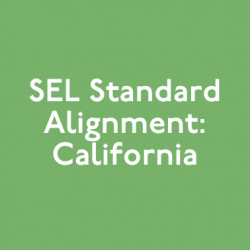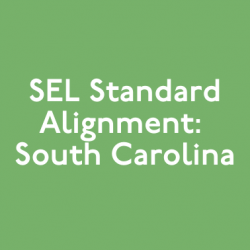The mental health crisis among students remains a pressing concern for educational institutions. Both students and staff continue to grapple with the overwhelming pressure and expectations they encounter daily.
School districts recognize the significance of allocating resources that not only address existing mental health needs but also take proactive measures to enhance the overall campus culture. Emphasizing social skill development proves to be a proactive approach in promoting emotional intelligence, leadership, resilience, and relationship skills, thereby fostering a more robust foundation for academic, professional, and emotional growth.
However, funding remains challenging, especially as post-COVID programs decrease and budget cuts can force challenging choices for admins.
Why fund Move This World?
Move This World is a proactive and preventative mental health platform for students, staff, and families in PreK-12 settings. It aligns with MTSS with Tier 1 and Tier 2 solutions, and goes beyond the students with educator wellness solutions, family resources, and teletherapy options.
Our comprehensive approach and multimedia video curricula emphasize critical life and social skills, fostering a healthier foundation for academic, professional, and emotional growth. As a CASEL recognized program, we have an evidence-based solution for improving behavioral outcomes and improving academics.
Funding Move This World helps you build a stronger school community.
How to fund Move This World
Federal Funding is available for schools and districts to support their mental health initiatives. The following funding sources can apply to Move This World programs:
- Title I, Part A—Improving Basic Programs Operated by Local Educational Agencies
- Title I, Part D—Prevention and Intervention Programs for Children and Youth Who Are Neglected, Delinquent, or At-Risk
- Title II, Part II—Supporting Effective Instruction (Teacher Training and Teacher Retention)
- Title IV, Part A—Student Support and Academic Enrichment (SSAE) Grants
- Title VI, Part B, Subpart 1—Small, Rural School Grant Program
- Title VI, Part B, Subpart 2—Rural and Low-Income School Program
- Title VIII—Impact Aid
Options for Mental Health Funding in 2024-2025
Beyond federal funding, there are many available grants for mental health and wellness resources in schools. Whether utilizing a grant to invest in a solution or leveraging several funding sources to support your community goals, your district’s grant manager or federal funding specialist can help you navigate the available options. Below are a few suggestions to explore available mental health and wellness grants:
- Greenlights Grant Initiative: The Greenlights Grant Initiative is focused on raising awareness about school safety grants, equipping school districts with resources and tools for successful applications, and ensuring continuous and more equitable federal funding for school safety.
- NEA Foundation Student Success Grants: Two levels of funding are available for educators to grant activities for 12 months. Applicants must be members of the National Education Association. Next deadline is September 15.
- DonorsChoose.org: Educators can receive funding through Donors Choose, and this resource has been utilized to contribute to funds for SEL solutions in classrooms and schools.
- Fundsnet Services: Find information about grants or fundraising opportunities that could be used to fund SEL initiatives in your school. This service mostly focuses on non-profit and philanthropic funding sources.
- The Federal Grants Database: Search this government database to stay updated on federal grants that could be utilized to fund SEL initiatives.
The demand for resources focusing on emotional and social development has never been greater. Schools are seeking to invest in educational materials, tools, and solutions that facilitate regular practice in these areas, foster skill growth over the years, and ensure long-lasting effects beyond the classroom. Grants supporting social-emotional learning initiatives represent a crucial stride toward acquiring the necessary resources, expertise, and training for schools.










